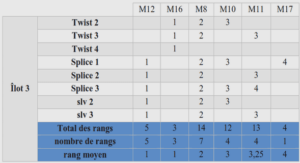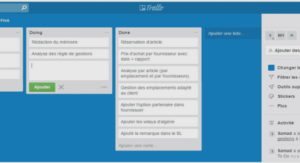Single mode Holey Fiber in GeGaSbS chalcogenide glass
Considerable interest lies in the development of nonlinear optical fibers for applications such as all optical regeneration, optical demultiplexing, raman amplification, wavelength conversion and broad band spectrum generation. The parameter γ=2πn2/λAeff is a measure of the fiber nonlinearity where λ is the wavelength, n2 the nonlinear refractive index and Aeff the effective mode area. For standard single mode silica fiber (SMF), n2 ≈ 2.2×10- 20 m2/W and γ ≈ 1 W-1km-1 at 1550 nm. It is possible to significantly increase the nonlinear parameter by using materials with greater intrinsic nonlinearity and/or by reducing the effective mode area. In chalcogenide glasses, n2 has been measured to be between 100 to 1000 times larger than for silica glass. These glasses present a large wavelength transparency window (from about 1µm to about 10 µm) and a high refractive index (greater than 2). There are numerous chalcogenide compounds such as As2S3, As2Se3, GLS, GeSe4, GaGeSbS which are attractive for nonlinear devices [1],[2] and which offer varying degrees of difficulty in the fabrication of single mode fiber (difficulties normally due to viscosity differences of core/clad glasses and crystallisation effects). Nonlinear effects can be also enhanced by using holey fibers (HF). They are a new class of optical fibers first demonstrated at the end of the 90’s [3] which consist of a periodic lattice of holes arranged around a solid core that run along the fiber length. Usually fabricated using silica glass, the holes are arranged on a hexagonal lattice, diminishing the effective refractive index in the cladding region giving rise to index guiding in the core. The remarkable optical properties exhibited by these structures are now well known: very small or very large mode areas; widely tuneable dispersion, with positive dispersion at short wavelengths; endlessly single mode operation. In silica glass, the most common fabrication method is the “Stack&Draw” technique. Glass capillaries are stacked in a hexagonal lattice of several rings, and surrounded by a glass jacket to form the fiber pre-form. This process enables the realisation of complex structures (incorporation of many rings, capillaries of varying size), is reproducible, and allows preservation of geometry from the pre-form through to the fiber. In the case of chalcogenide glass, there are few reports dealing with holey fibers and to our knowledge only the GLS glasses system has been treated, with very simple structures. [4],[5]. In this paper, we present recent results on the fabrication of a holey fiber with GaGeSbS chalcogenide glass using the “Stack&Draw” procedure. This represents, to the best of our knowledge, the first demonstration of a chalcogenide based holey fiber with the complex structure required (several rings of holes) to allow flexible dispersion tailoring. 2.
Glass fabrication The nominal composition is Ga5Ge20Sb10S65. High purity raw materials (5N) are used for glass fabrication. The elements are placed in sealed silica tube under vacuum (10-5 mb), and the batch is heated at 800°C for 12h. The glass transition temperature, Tg, is 305°C, the index of refraction is 2.25 at 1550nm and the nonlinear coefficient, n2, is measured to be 120 times greater than that of silica. This particular glass is transparent from 0.6 µm to 10 µm (low loss fiber fabrication possible from 1 to 6 µm). This glass presents several advantages which make it an ideal candidate for the “stack and draw” technique: shallow variation of viscosity with temperature allowing stable fiber draw over a range of several tens of °C; absence of crystallisation effects around Tg. To make the core rod, the glass is quenched in water and then annealed near the glass transition temperature for 30 min and cooled down to room temperature. For tube fabrication, a glass melt at 700°C is spun at 3000 rpm at ambient temperature during several minutes. During cooling, the viscosity increases and after a few minutes the vitrified tube is formed. The tube size used here is typically 12 cm*12mm*5mm (length*outer diameter*inner diameter).



